Oxcarbazepine
Oxcarbazepine, Oxtellar, Trileptal (oxcarbazepine) is a small molecule pharmaceutical. Oxcarbazepine was first approved as Trileptal on 2000-01-14. It is used to treat epilepsy and partial epilepsies in the USA.
Download report
Favorite
Events Timeline
Commercial
Clinical
Drug
Target
Variants
Financial
Trends
Safety
Events Timeline
5D
1M
3M
6M
YTD
1Y
2Y
5Y
Max
Events
FDA approval date
EMA approval date
Patent expiration date
Study first post date
Last update post date
Start date
Primary completion date
Completion date
Results first post date

Mock data
Subscribe for the real data
Subscribe for the real data
Commercial
Therapeutic Areas
Therapeutic Area | MeSH |
|---|---|
| nervous system diseases | D009422 |
Trade Name
FDA
EMA
Oxcarbazepine, Oxtellar, Trileptal (discontinued: Oxcarbazepine)
Drug Products
FDA
EMA
New Drug Application (NDA)
New Drug Application (NDA)
Abbreviated New Drug Application (ANDA)
Abbreviated New Drug Application (ANDA)
Labels
FDA
EMA
Brand Name | Status | Last Update |
|---|---|---|
| oxcarbazepine | ANDA | 2025-12-19 |
| oxtellar xr | New Drug Application | 2025-10-22 |
| trileptal | New Drug Application | 2025-12-16 |
Indications
FDA
EMA
Indication | Ontology | MeSH | ICD-10 |
|---|---|---|---|
| epilepsy | EFO_0000474 | D004827 | G40.9 |
| partial epilepsies | EFO_0004263 | D004828 | — |
Agency Specific
FDA
EMA
No data
Patent Expiration
HCPCS
No data
Clinical
Clinical Trials
71 clinical trials
View more details
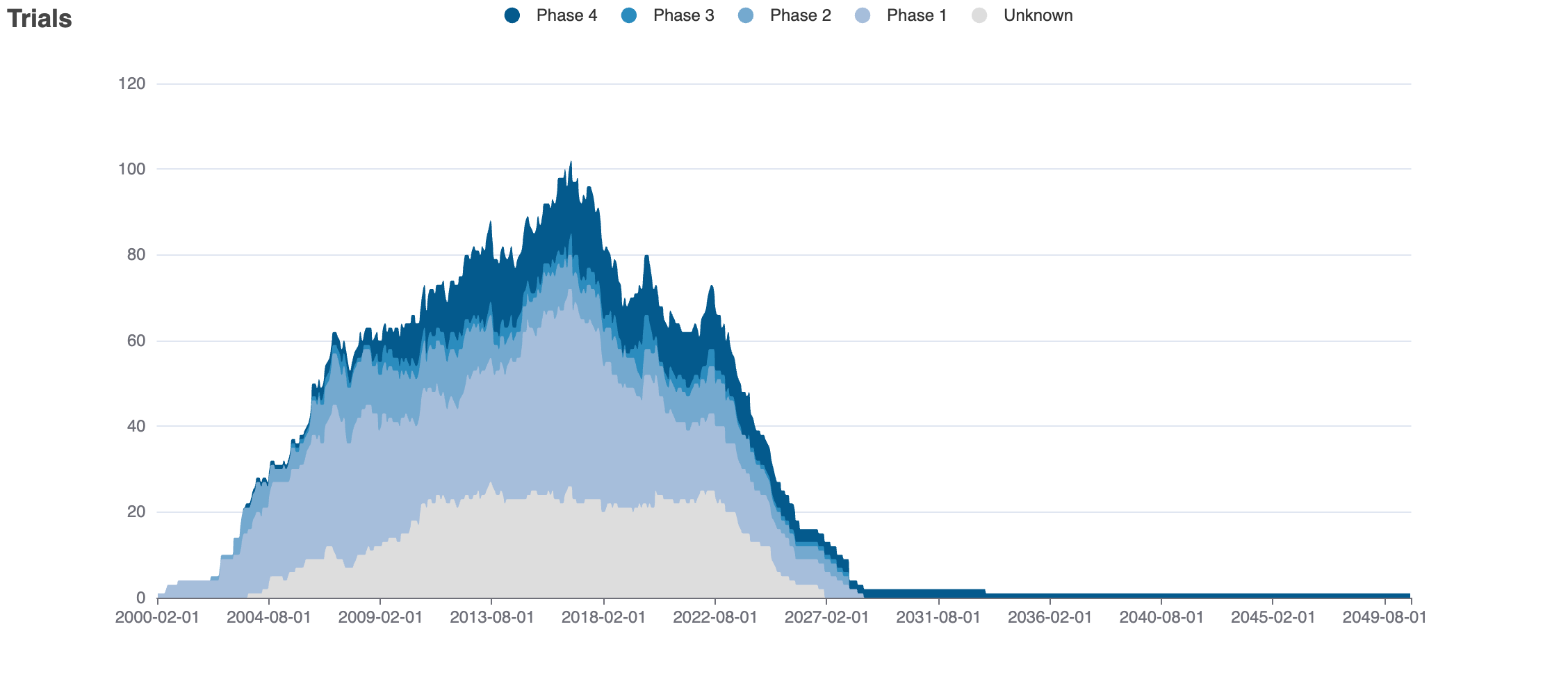
Mock data
Subscribe for the real data
Subscribe for the real data
Indications Phases 4
Indication | MeSH | Ontology | ICD-10 | Ph 1 | Ph 2 | Ph 3 | Ph 4 | Other | Total |
|---|---|---|---|---|---|---|---|---|---|
| Epilepsy | D004827 | EFO_0000474 | G40.9 | — | — | 2 | 2 | — | 4 |
| Seizures | D012640 | — | G40.4 | — | 1 | 1 | 2 | — | 3 |
| Partial epilepsies | D004828 | EFO_0004263 | — | — | — | 1 | 2 | — | 3 |
| Metabolic clearance rate | D008657 | — | — | — | — | — | 1 | — | 1 |
| Conduct disorder | D019955 | EFO_0004216 | F91 | — | — | — | 1 | — | 1 |
| Aggression | D000374 | EFO_0003015 | — | — | — | — | 1 | — | 1 |
| Impulsive behavior | D007175 | — | — | — | — | — | 1 | — | 1 |
| Bipolar disorder | D001714 | EFO_0000289 | F30.9 | — | — | — | 1 | — | 1 |
Indications Phases 3
Indication | MeSH | Ontology | ICD-10 | Ph 1 | Ph 2 | Ph 3 | Ph 4 | Other | Total |
|---|---|---|---|---|---|---|---|---|---|
| Complex partial epilepsy | D017029 | EFO_1000877 | — | — | 1 | 1 | — | — | 1 |
Indications Phases 2
Indication | MeSH | Ontology | ICD-10 | Ph 1 | Ph 2 | Ph 3 | Ph 4 | Other | Total |
|---|---|---|---|---|---|---|---|---|---|
| Multiple sclerosis | D009103 | EFO_0003885 | G35 | — | 1 | — | — | — | 1 |
| Sclerosis | D012598 | — | — | — | 1 | — | — | — | 1 |
Indications Phases 1
No data
Indications Without Phase
No data
Epidemiology
Epidemiological information for investigational and approved indications
View more details
Drug
General
| Drug common name | Oxcarbazepine |
| INN | oxcarbazepine |
| Description | Oxcarbazepine is a dibenzoazepine derivative, having a carbamoyl group at the ring nitrogen, substituted with an oxo group at C-4 of the azepeine ring which is also hydrogenated at C-4 and C-5. It is a anticholinergic anticonvulsant and mood stabilizing drug, used primarily in the treatment of epilepsy. It has a role as an anticonvulsant and a drug allergen. It is a dibenzoazepine and a cyclic ketone. It contains a carbamoyl group. |
| Classification | Small molecule |
| Drug class | tricyclic compounds |
| Image (chem structure or protein) |  |
| Structure (InChI/SMILES or Protein Sequence) | NC(=O)N1c2ccccc2CC(=O)c2ccccc21 |
Identifiers
| PDB | — |
| CAS-ID | 28721-07-5 |
| RxCUI | — |
| ChEMBL ID | CHEMBL1068 |
| ChEBI ID | 7824 |
| PubChem CID | 34312 |
| DrugBank | DB00776 |
| UNII ID | VZI5B1W380 (ChemIDplus, GSRS) |
Target
No data
Variants
No data
Financial
Revenue by drug
$
€
£
₣
Oxtellar – Supernus Pharmaceuticals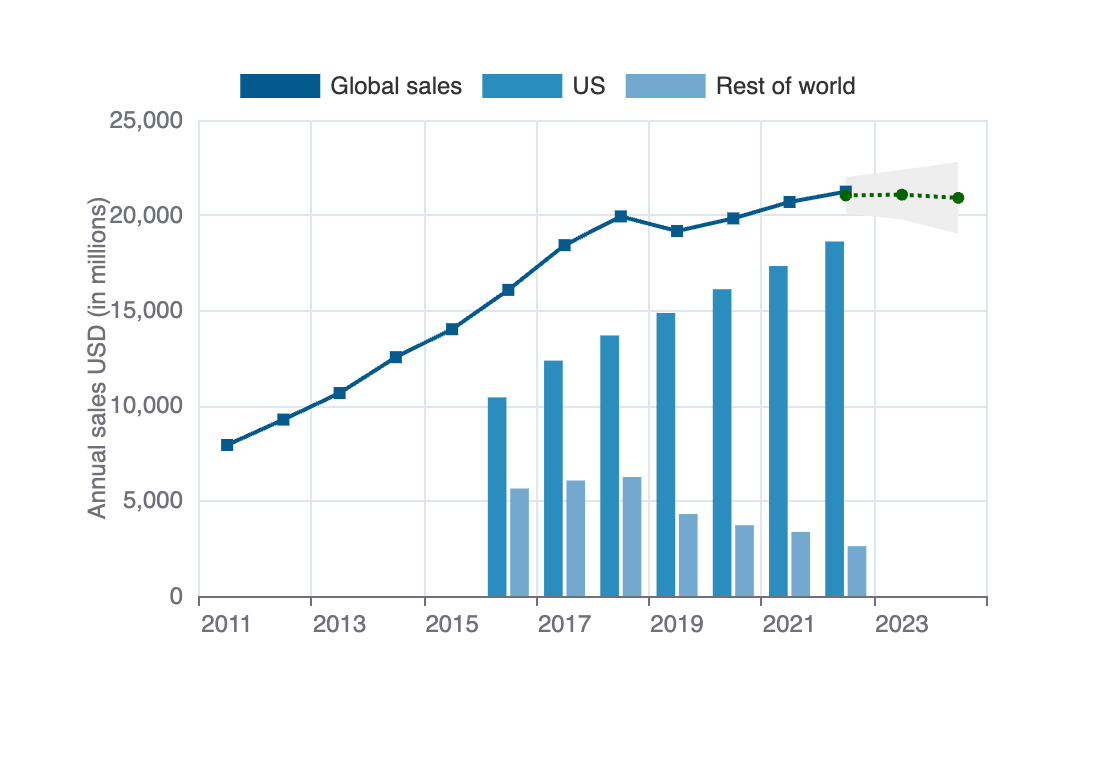


Mock data
Subscribe for the real data
Subscribe for the real data

Mock data
Subscribe for the real data
Subscribe for the real data
Tabular view
Estimated US medical usage
Oxcarbazepine
Total medical expenditures per year (USD, in millions)

Mock data
Subscribe for the real data
Subscribe for the real data
Number of persons purchased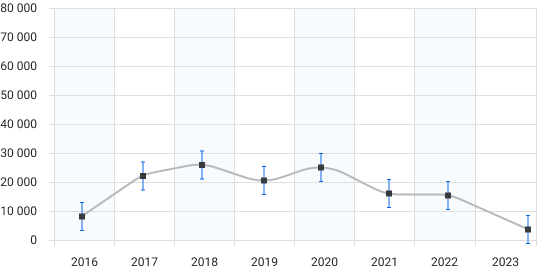

Mock data
Subscribe for the real data
Subscribe for the real data
Number of purchases

Mock data
Subscribe for the real data
Subscribe for the real data
Refill frequency

Mock data
Subscribe for the real data
Subscribe for the real data
Price per prescription (USD)

Mock data
Subscribe for the real data
Subscribe for the real data
Tabular view
Trends
PubMed Central
Top Terms for Disease or Syndrome:
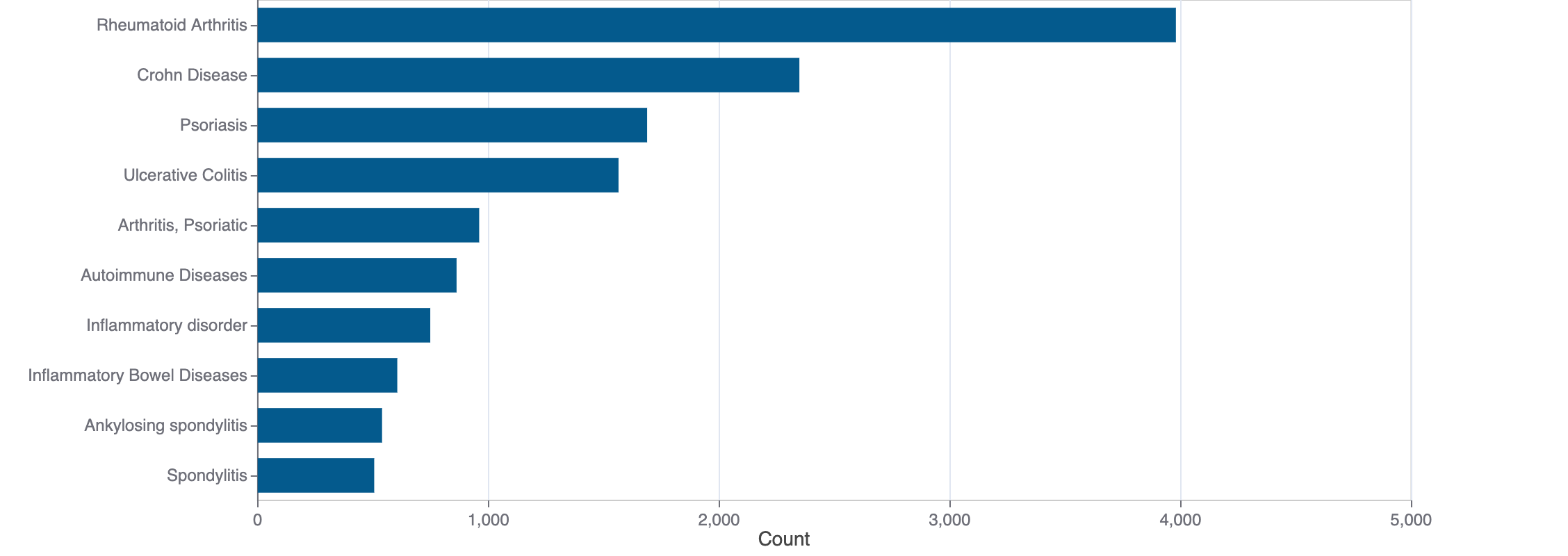
Mock data
Subscribe for the real data
Subscribe for the real data
Additional graphs summarizing 9,200 documents
View more details
Safety
Black-box Warning
No Black-box warning
Adverse Events
Top Adverse Reactions
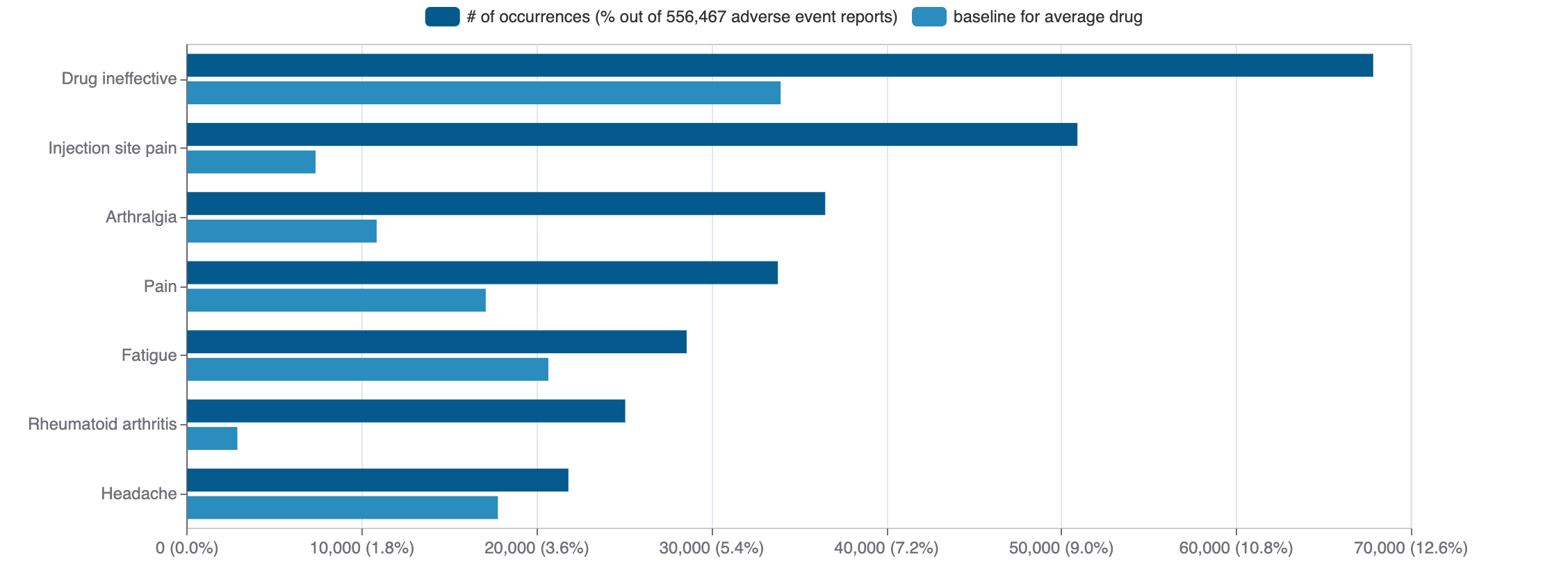
Mock data
Subscribe for the real data
Subscribe for the real data
17,966 adverse events reported
View more details
© 2020-2025 Collaborative Drug Discovery Inc. (CDD) | Terms of Use